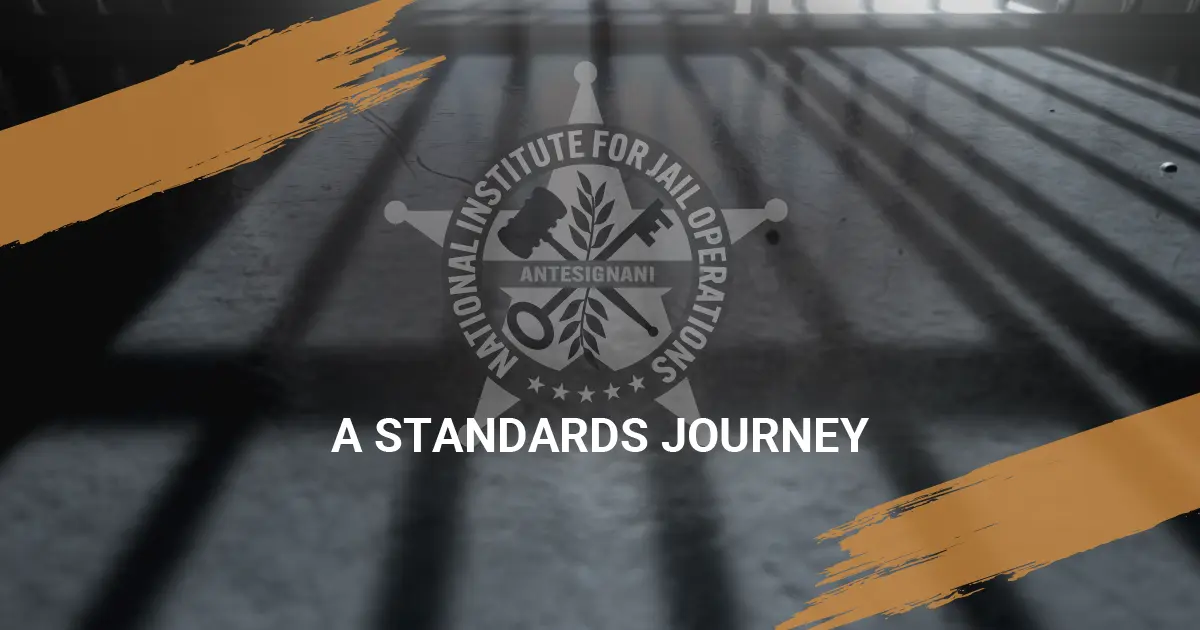By Expert: Mike Haley, Ph.D.
It was over forty years ago that I began working in local corrections in Alabama. At that time, there was an emerging concern about lack of standards, guidelines, policies, etc., to guide local jail officials. This concern, coupled with an absence of formal training, led to a search for solutions. Prompting that search was the growing amount of litigation against local jails.
I remember going into a rural Alabama jail in 1975 and asking if there was a manual of written policies and procedures. I was directed to enter the staff bathroom, close the door and sit on the toilet to read the policies which were taped to the inside of the bathroom door. Needless to say, they offered little guidance to jail staff and no insight into what the law required. Although the method of posting the guidelines was unique, this certainly was not the only rural jail that had yet to formalize policies and procedures. Sheriffs and jail officials were concerned, but they had little guidance as to what to do.
The concern of local officials led to the first formal jail officer training event in the state. Two unknowns were brought in, both from the State of Utah. Gary DeLand and Lynn Lund provided enough valuable information to inform attending Sheriffs and jail officials and to frighten them into action. Jail officer training suddenly became popular with state regional training academies, eventually resulting in the creation of an 80 hour curriculum for local jail officers.
I was involved in the training development and later in a burgeoning standards development movement. The plan at that time was that the state should develop a set of standards and then have the legislature incorporate them into law. Thankfully, only the first part of the plan came into fruition.
In 1982, I was appointed by the Alabama Sheriffs’ Association as Project Director for the development of Alabama County Jail Standards. I worked closely with the Clinical Program of the University of Alabama School of Law which provided legal research, writing and administrative support services.
Having little precedent to guide us, we developed state standards on the “best practices” model which had emerged on the national level and which was being utilized by several adjacent states. The standards were completed in 1982 and Alabama Sheriffs made the wise decision not to submit the standards to the legislature for incorporation into state law. (Note: My later experience as an expert defense witness confirmed the danger of legislated local jail standards. Not only do they create liberty interests for litigating inmates, but also they are a very useful tool for plaintiff attorneys. Plus, anyone who has ever tried to update or modify any law passed by any state legislative body knows it is a long, frustrating and often fruitless process.)
I left Alabama in 1983 but continued to monitor local jail progress in Alabama and to return frequently as a trainer and consultant. I worked several years with the Louisiana Department of Corrections, an agency which was not seeking accreditation at that time. Unfortunately for that department, and for Sheriffs throughout the state, a later decision took the Louisiana DOC into the “best practices” snare.
Fast forward to the early 1990’s when I returned to Alabama as Director of Jail Services for the Alabama Sheriffs’ Association. During that time, training for local jail officers was increased, primarily through the University of Alabama Law Enforcement Academy. The impact of the previously developed jail standards was negligible, as we discovered that they were not helpful in a practical manner and also not compatible with constantly changing federal court decisions.
In the late 1990’s, I was appointed Commissioner of the Alabama Department of Corrections. Alabama DOC facilities were not accredited by any accrediting agency. I had no interest in pursuing accreditation because I viewed it as a fruitless and expensive pursuit that offered little, if any, protection from inmate litigation.
I well remember when I was visited by the Executive Director of a national accrediting agency. He came laden with gifts for me and the DOC executive staff – shirts, coolers, trinkets—all in addition to his “pitch” for the Alabama DOC to start participating in the accreditation process. (Note: His visit reminded me of a statement referenced by Professor John DiIulio on page 83 of his classic 1987 book Governing Prisons. Dr. DiIulio quoted a California prison official who described this national accrediting agency as “a lobby, professional standards-setter, peer review group, public relations mill, seller of prison-related junk, and a place where people in this business can get credibility, lift their prestige, make connections, pop-off and retire.”)
Nevertheless, we had a nice visit, including a trip to the nearby women’s facility where he and I toured the facility and continued our conversation.
After his visit, I reconsidered my stance on accreditation. After at least ten seconds of intense deliberation, I decided to stay the course. The Alabama DOC remained distant from the national standards/accreditation process, a position which they have maintained to this date, and hopefully will have enough sense to maintain for the future.
In an effort to be fair and to ensure that I was not making an isolated decision based on my singular prejudice, I talked to the DOC legal staff concerning their thoughts on pursuing accreditation. Their response? (paraphrased) “Why? There is nothing there to give us any legal protection. It is the law we should be concerned about, not a manual of standards that might be outdated by the time it is printed and distributed.”
Fast forward again to my post-DOC days when I served as Warden of the Mobile County, Alabama, Metro Jail, a county/municipal jail with an average daily population of approximately 1,500. The first thing I inherited when I took command of the jail was a previously approved DOJ inspection visit. The jail survived that circus atmosphere inspection which even included my having one of the DOJ “experts” escorted from the jail and forbidden from returning.
Once again,the possibility of seeking “best practices” accreditation was brought up. Once again, the response was, “Why?” Our practices were based on the solid foundation of statutory and case law and this provided much more security than a manual of committee generated standards.
It was during the latter part of my stay in Mobile County when Legal Based Jail Guidelines were introduced to the state. At last, something worth pursuing. I left Alabama before the Guidelines could be fully implemented but tracked their success as they were adopted by more and more jails.
When I left Alabama, and the 11th Circuit, to return to my home state of Louisiana, I left with the intent to introduce Legal Based Jail Guidelines to Louisiana and the 5th Circuit. That is being done, with Washington Parish being the first, and St. Tammany Parish the second, to implement the Guidelines. Other parishes are certain to follow and I understand the Guidelines are now being introduced in Texas. This is a giant step for the 5th Circuit just as it has been for other circuits which have already adopted and implemented the Guidelines.
Why Legal Based Guidelines instead of committee generated standards that are basically “one size fits all?” The answer is simple. Courts make decisions based on law and legal precedent, not on committee proclamations. Thus, it is quite reasonable to base jail operations on the same law and legal precedent as do the courts.
It is obvious that the best practice available to jail officials is Legal Based Jail Guidelines.
I consider my standards journey to be complete.

MIKE-HALEY
Mike Haley is Chief Criminal Deputy for the Washington Parish, Louisiana, Sheriff’s Office. He has managed both local and state corrections facilities and has held several positions, including Director of Jail Services for the Alabama Sheriffs’ Association and Commissioner of Corrections for the State of Alabama. In addition, he has served as a trainer and jail litigation expert witness in several states, is a NIJO instructor and a member of the NIJO Jail Advisory Council (JAC). Mike earned a Ph.D. degree in Psychology and Counseling and began his corrections career in New Orleans at the Orleans Parish Prison.



